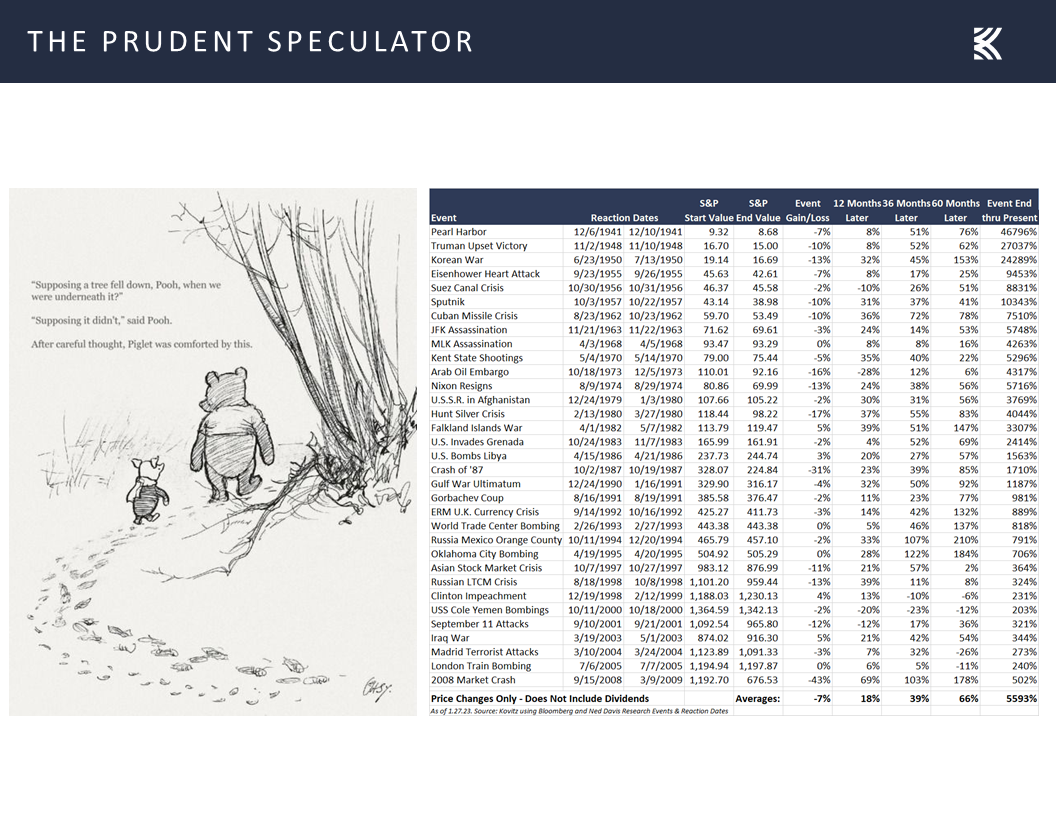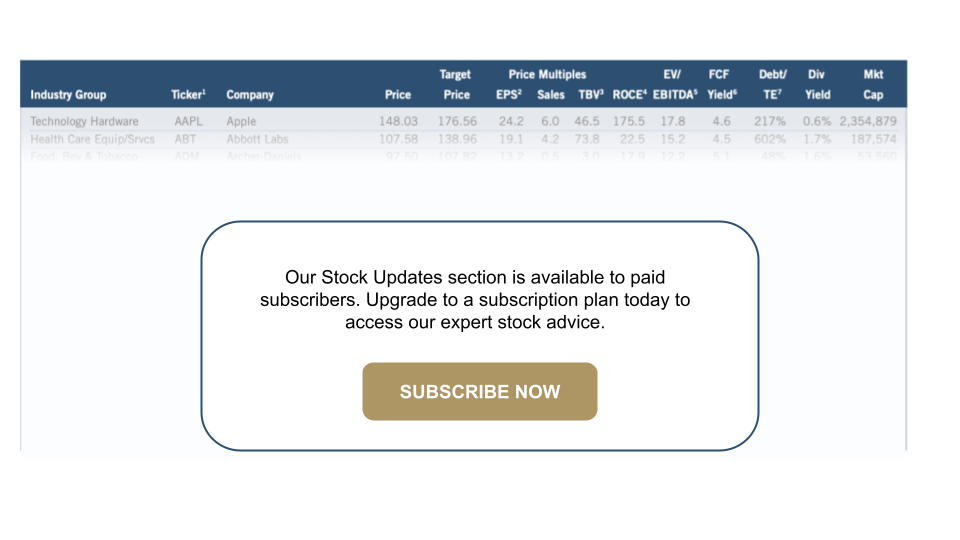The Prudent Speculator Weekly Commentary is expertly curated every week as a valuable resource for stock market news, investing tips, business insights, and economic trends as it relates to value stock investing. This week, we cover the recent Federal Reserve meeting and 25 bps rate fed hike, equities, the economic outlook, corporate profits and more. We also include a short preview of our specific stock picks for the week; the entire list is available only to our community of loyal subscribers.
| Subscribe to The Prudent Speculator |
Executive Summary
- Week In Review – January Rally Continues
- Sentiment – Be Greedy When Others are Fearful
- Patience – Volatility is Normal But Long-Term Trend is Up
- Econ Numbers – Mixed Picture: Solid Q4 GDP and Jobs Numbers; LEI Weakens Further
- Corporate Profits – Q4 Report Cards OK Thus Far
- Inflation – PCE Pulls Back; Modest Increase in Market Projections for Peak Fed Funds Rate
- Valuations – Inexpensive Metrics for our Portfolios
- Stock News – Updates on MSFT, MMM, ONB, SYF, COF, GD, ABT, NSC, STX, LRCX, IBM, INTC & HAS
Week In Review: Equities
Stocks, especially those of the value variety, closed Friday on a less-than-stellar note, but it was another terrific week for equities, with January continuing to see sizable gains across the board. Of course, while we know that returns over the last 12 months have not been grand:

It is a market of stocks and returns over the last couple of years show wide dispersion, similar in magnitude to what was seen after the bursting of the Tech Bubble in the year 2000.
…we suspect that some market players were guilty of buying high at the start of 2022 and selling near the lows later in the year. After all, Bloomberg reported that going into 2022, Wall Street strategists were predicting another good year, with an S&P 500 target near 4950. The index finished the year at 3840.
As is often par for the course whenever stocks have headed south, negativity dominated the financial press last fall. Indeed, purveyors of doom-and-gloom were all over the airwaves, seemingly counseling to close the proverbial barn doors after the horses had run out.
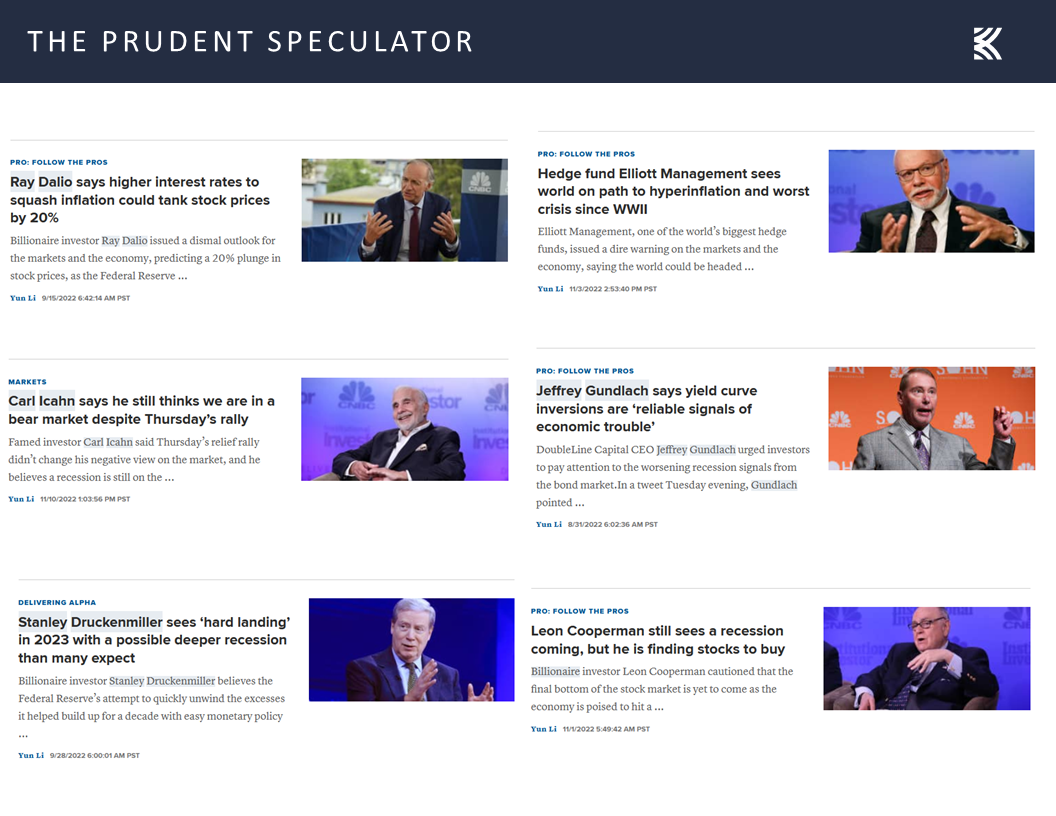
About all the supposed experts have proved over the years is to remind investors that time in the market trumps market timing.
…so much so that there was little enthusiasm for stocks as 2023 began. The consensus prognostication from those same Wall Street strategists was 4078 (the S&P 500 topped that mark on Friday, before dipping below at the close), the 6% estimated gain for this year well below the usual upside target.
Sentiment: Be Greedy When Others are Fearful
Further illustrating the point that the only problem with market timing is getting the timing right, folks on Main Street were even less enchanted with the outlook as the first Sentiment Survey from the American Association of Individual Investors (AAII) of 2023 showed a score of 20.5% to 42.0% in favor of the Bears, versus the usual seven-point Bull advantage.
The gauge is widely viewed with a contrarian eye, so the tally of Bulls in the most recent AAII Survey edging down to 28.4% versus the week prior and the number of Bears climbing to 36.7% means the measure is still suggesting investors should be greedy when others are fearful.
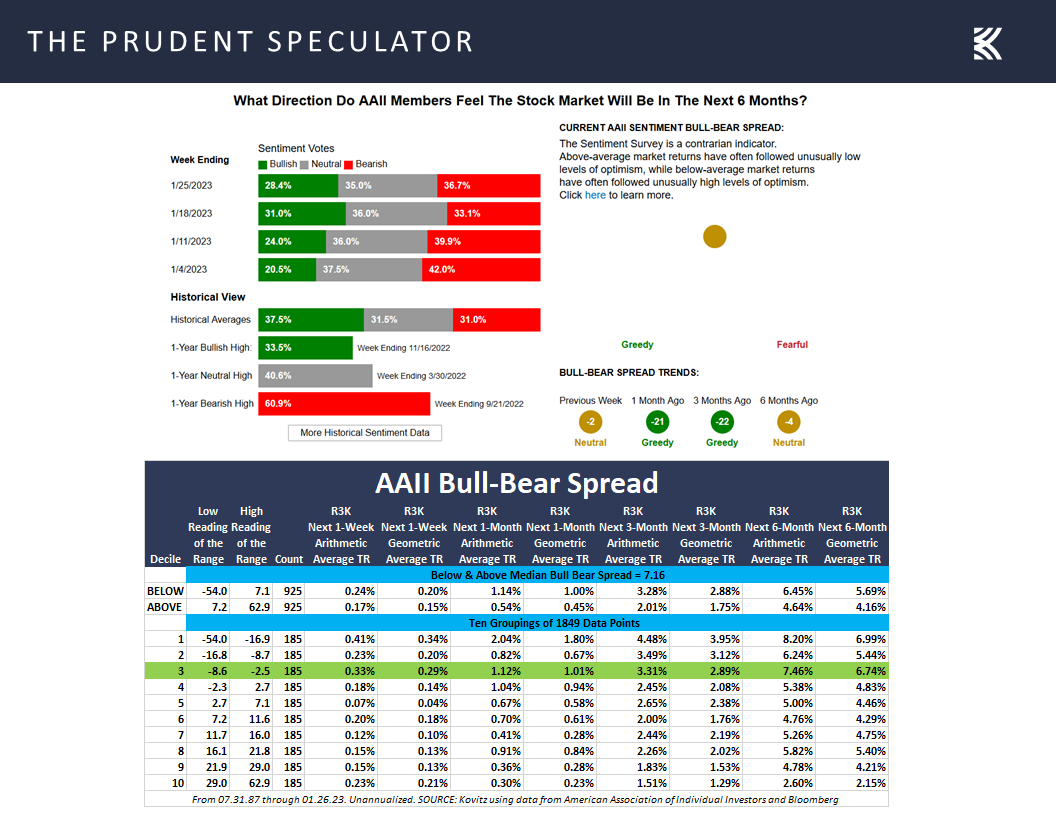
The good folks in the AAII Sentiment Survey were more pessimistic last week than the week prior, which is not a bad thing based on 36 years of data for this contrarian gauge.
Patience: Volatility is Normal But Long-Term Trend is Up
None of this is meant to suggest that the big rebound will continue as we move forward, as history shows that selloffs, downturns, pullbacks, corrections and even Bear Markets are events with which equity investors always have had to endure on their way to the best long-term performance of any of the financial asset classes.
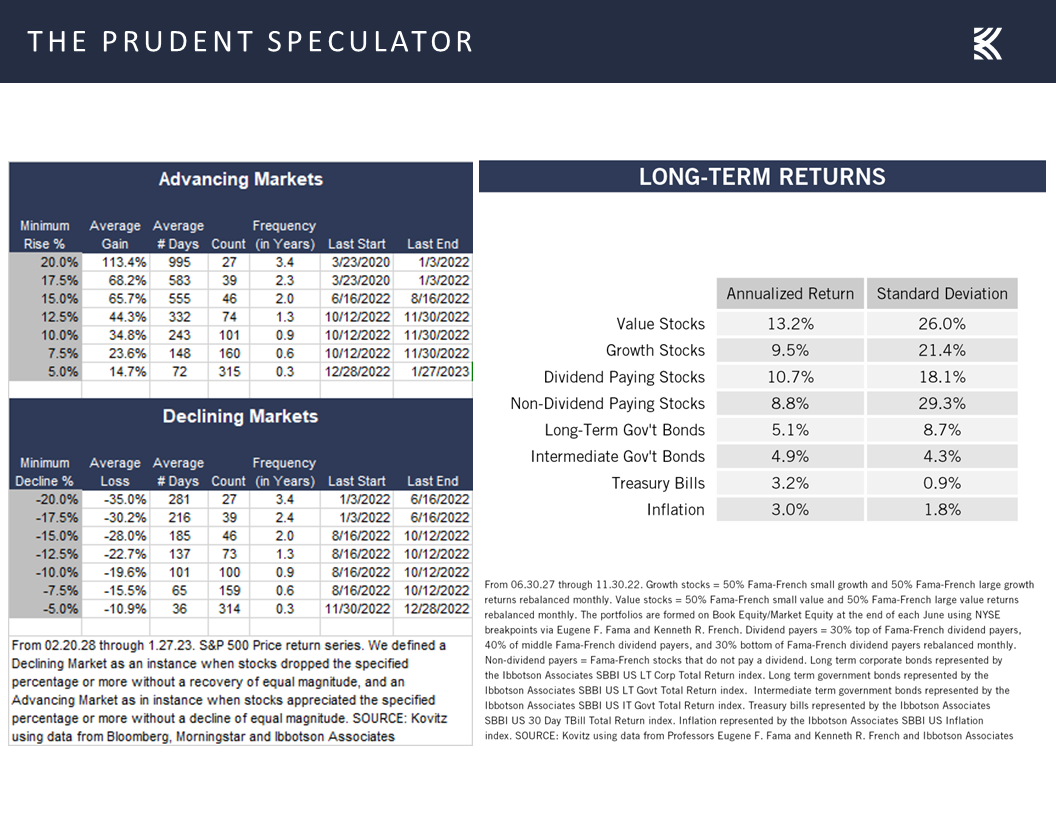
The secret to success in stocks is not to get scared out of them as every downturn has been followed by an upswing of far greater magnitude, so much so that long-term returns for Value stocks have exceeded 13% per annum.
Still, we have long believed that time in the market trumps market timing as far too many folks zig when they should have zagged. For example, per data analytics firm DALBAR, equity fund investors had awful relative returns in 2021, gaining only 18.4% on average, compared to a 28.7% return for the S&P 500, for a whopping 1030 basis point (10.3%) difference in performance. The longer-term historical numbers are even worse for bonds as Fixed Income fund investors had an annual return 500 basis points lower than the U.S. Aggregate Bond index over the past three decades.
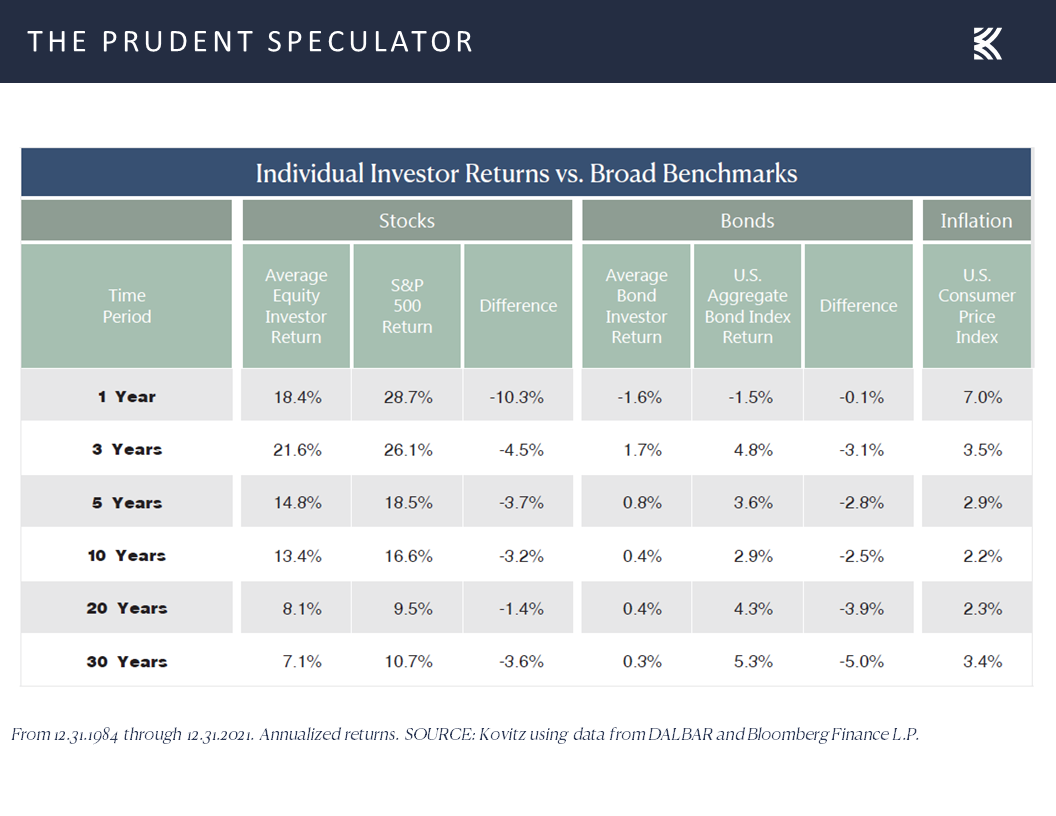
Data compiled by DALBAR show that equity (and fixed income) fund investors generally have been awful at timing their moves into and out of stocks (and bonds), with very detrimental long-term consequences.
Econ Numbers: Mixed Picture: Solid Q4 GDP and Jobs Numbers; LEI Weakens Further
We would argue that some of the rationale for the move higher this year, and in the fourth quarter of 2022, is that the plunge in stock prices over the first nine months of 2022 had discounted far worse news on the economy than what has occurred.
For example, Q4 2022 real (inflation-adjusted) domestic economic growth came in better than expected at a 2.9% growth rate on an annualized basis, while the current-dollar nominal GDP figure of $26.1 trillion soared by 7.3% on an annualized basis to an all-time high.
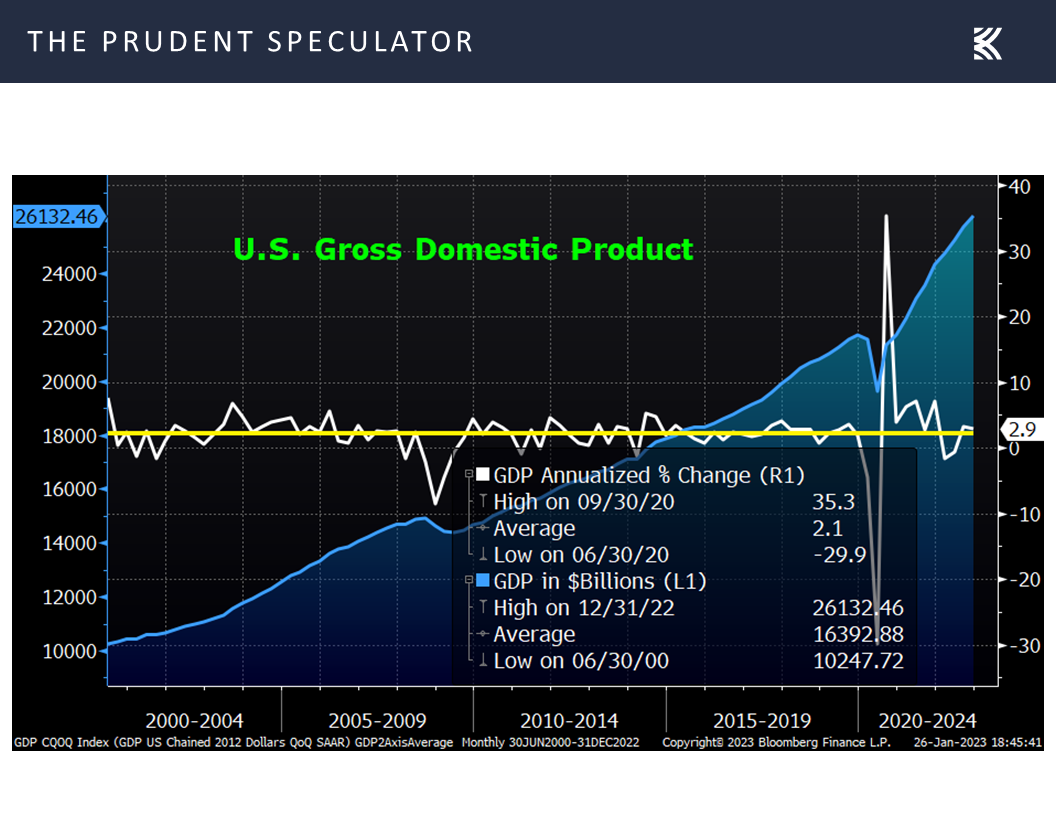
There was a huge 7.3% jump in Q4 nominal GDP, even as real (inflation-adjusted) growth was “only” 2.9%.
Certainly, the outlook for 2023 is hardly robust, with most forecasters of the mind that real GDP growth for the full year will be only modestly positive and the majority of prognosticators thinking that the U.S. economy will endure a recession at some point over the next 12 months.
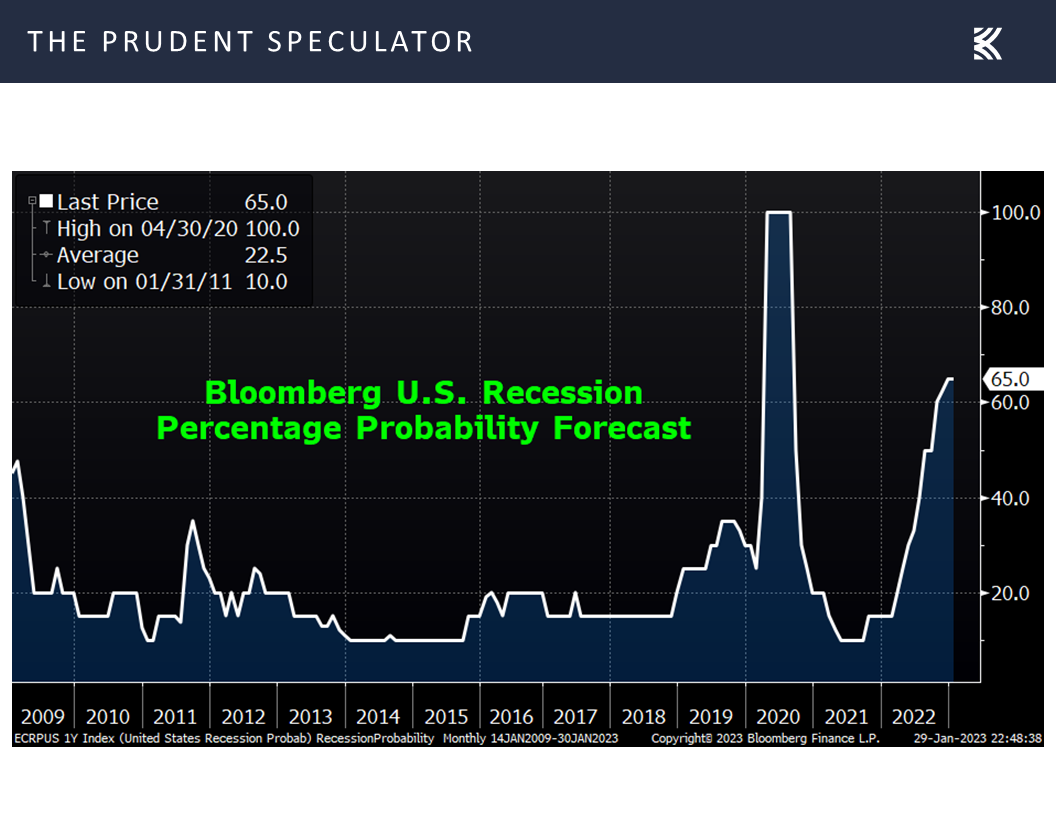
Economic forecasts are often fraught with peril, but the prognosticators now project a nearly two-thirds chance of a U.S. recession occurring in the next 12 months.
Last week, The Conference Board reported that its Leading Economic Index (LEI) for the U.S. decreased by 1.0% in December, following a decline of 1.1% in November. The LEI is now down 4.2% over the six-month period between June and December 2022. “The U.S. LEI fell sharply again in December—continuing to signal recession for the U.S. economy in the near term,” said Ataman Ozyildirim, Senior Director, Economics, at The Conference Board. “There was widespread weakness among leading indicators in December, indicating deteriorating conditions for labor markets, manufacturing, housing construction, and financial markets in the months ahead…Overall economic activity is likely to turn negative in the coming quarters before picking up again in the final quarter of 2023.”
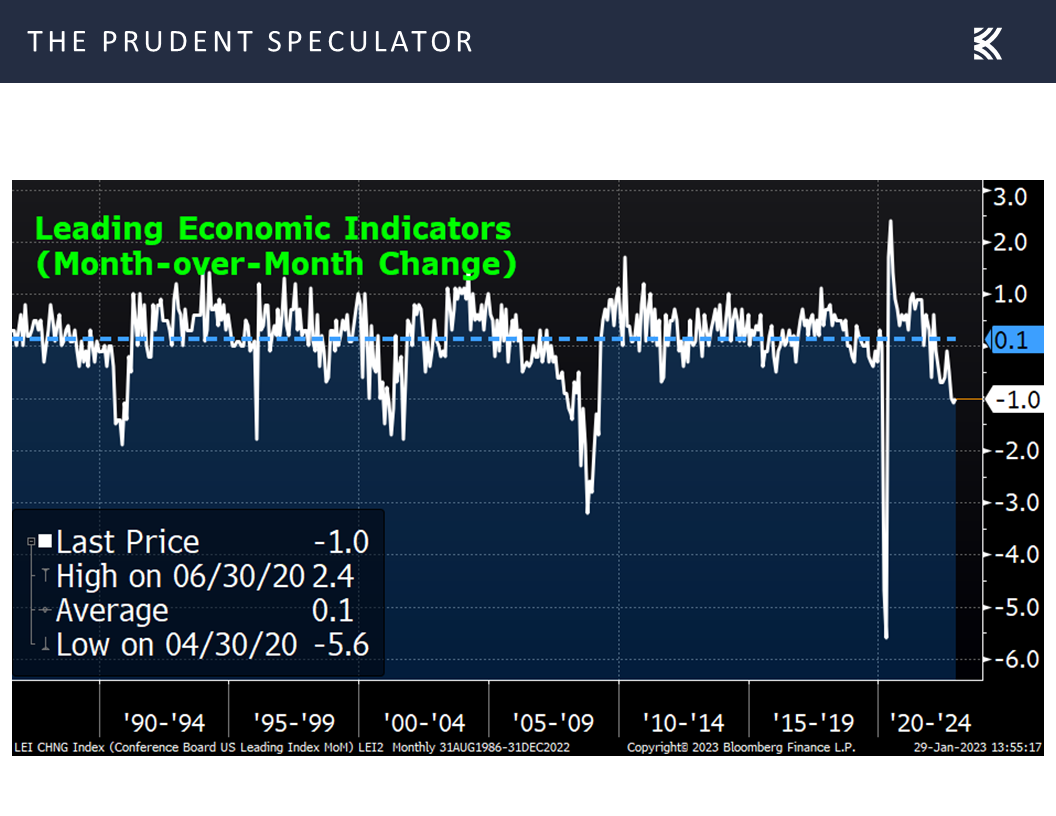
The forward-looking Leading Economic Indicators (LEI) fell again in December.
Tempering that LEI negativity a tad, the respective S&P Global Markit preliminary U.S. PMIs for the factory and services sectors improved in January, coming in at 46.8 and 46.2, both above expectations. S&P Global commented, “The U.S. economy has started 2023 on a disappointingly soft note, with business activity contracting sharply again in January according to the latest survey business data from S&P Global. Although moderating compared to December, the rate at which output is declining is among the steepest seen since the global financial crisis, reflecting falling activity across both manufacturing and services.”
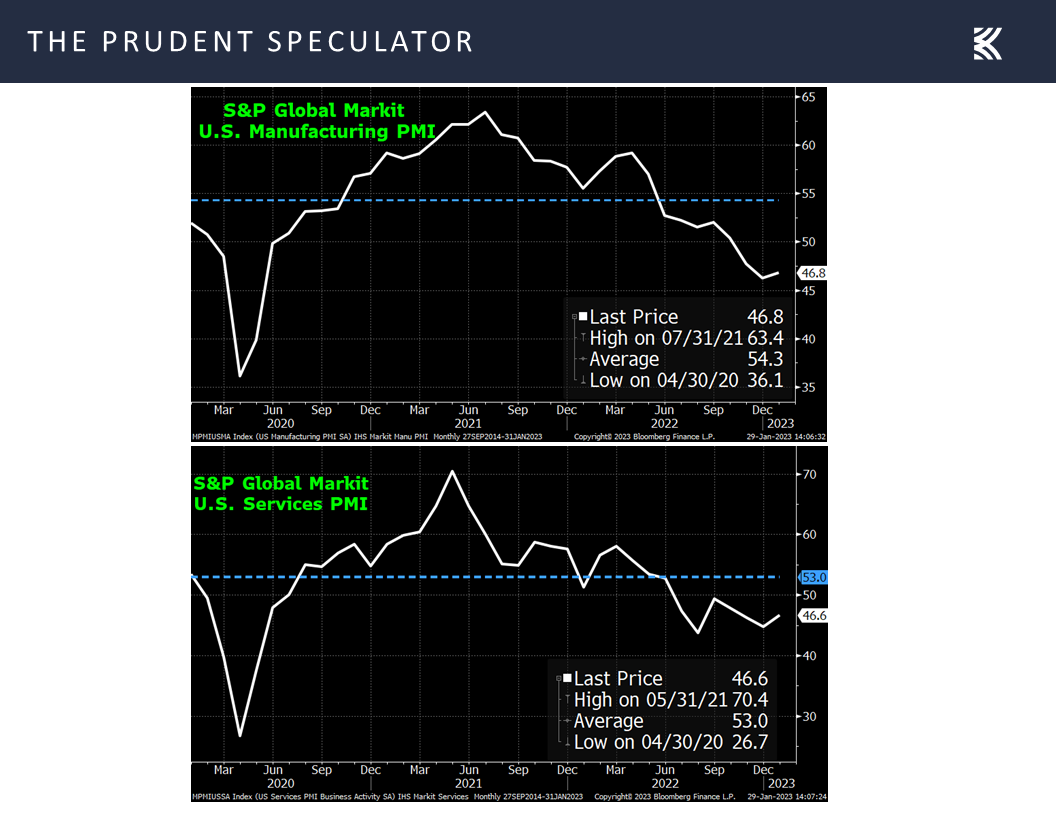
S&P Global Markit PMI readings moved higher in January.
S&P continued, “Jobs growth has also cooled, with January seeing a far weaker increase in payroll numbers than evident throughout much of last year, reflecting a hesitancy to expand capacity in the face of uncertain trading conditions in the months ahead. Although the survey saw a moderation in the rate of order book losses and an encouraging upturn in business sentiment, the overall level of confidence remains subdued by historical standards. Companies cite concerns over the ongoing impact of high prices and rising interest rates, as well as lingering worries over supply and labor shortages.”
Speaking of labor, there have been plenty of job cuts in the headlines of late, but new filings for unemployment benefits for the period ended January 21 were a seasonally adjusted 186,000, well below expectations and down from a revised 192,000 the week prior. Continuing claims filed through state programs inched up to 1.68 million, but businesses continue to hold onto most workers with qualified labor difficult to obtain, though the tally is expected to move up. Both of those numbers are stunningly low versus historical comparisons, which makes it difficult to believe that a recession, were it to occur, would be severe.
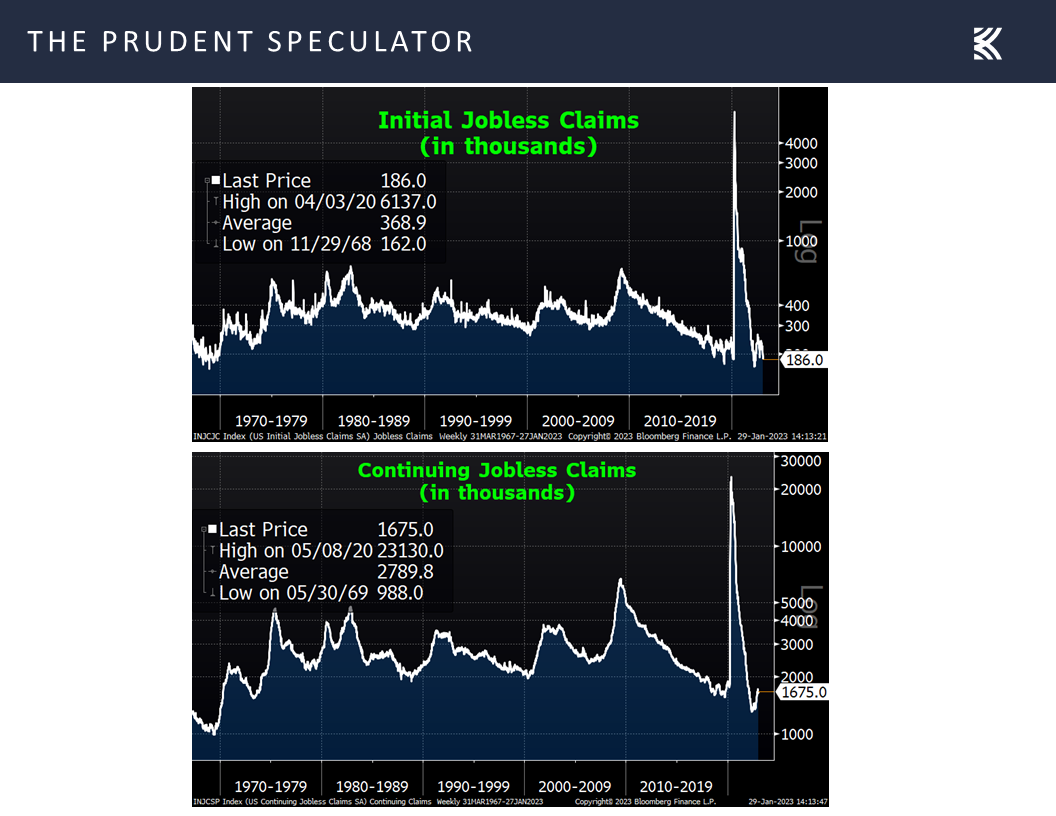
Other stats out last week were also relatively positive. The headline number for durable goods orders in December jumped 5.6%, compared to a 1.7% drop the month prior, with the improvement well above expectations. Excluding volatile transportation orders, orders inched down 0.1%, with pundits thinking the manufacturing economy is already in or soon will be entering recession. Meanwhile, new-home sales rose 2.3% in December, better than pessimistic projections, though the naysayers argue that this is a small segment of the overall housing market.
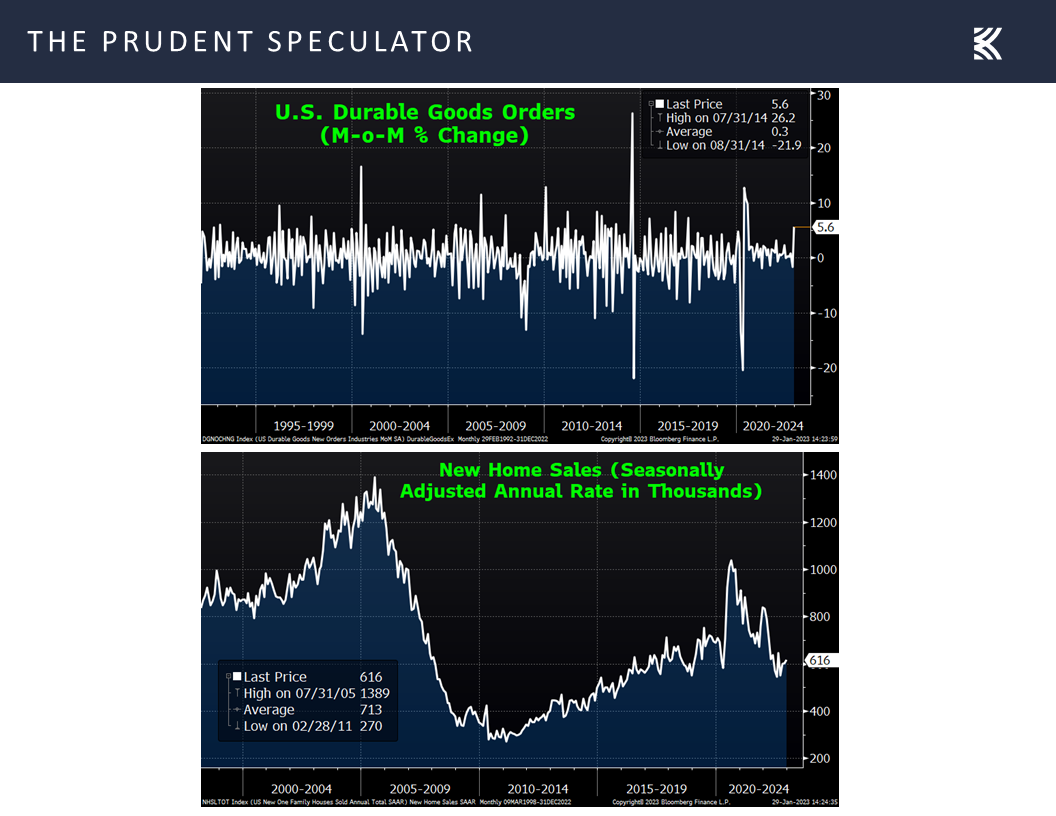
Corporate Profits: Q4 Report Cards OK Thus Far
Time will tell how the economy evolves, but we believe it will remain healthy enough to provide solid support for corporate profits this year. In fact, Corporate America has been turning in decent report cards with 69.2% of the S&P 500 members that have posted results thus far beating bottom-line expectations. True, only half of companies have exceeded top-line projections, and management teams generally have been subdued in their outlooks, but analyst forecasts are still calling for handsome EPS growth this year, even as the full-year guesses have been trending lower.
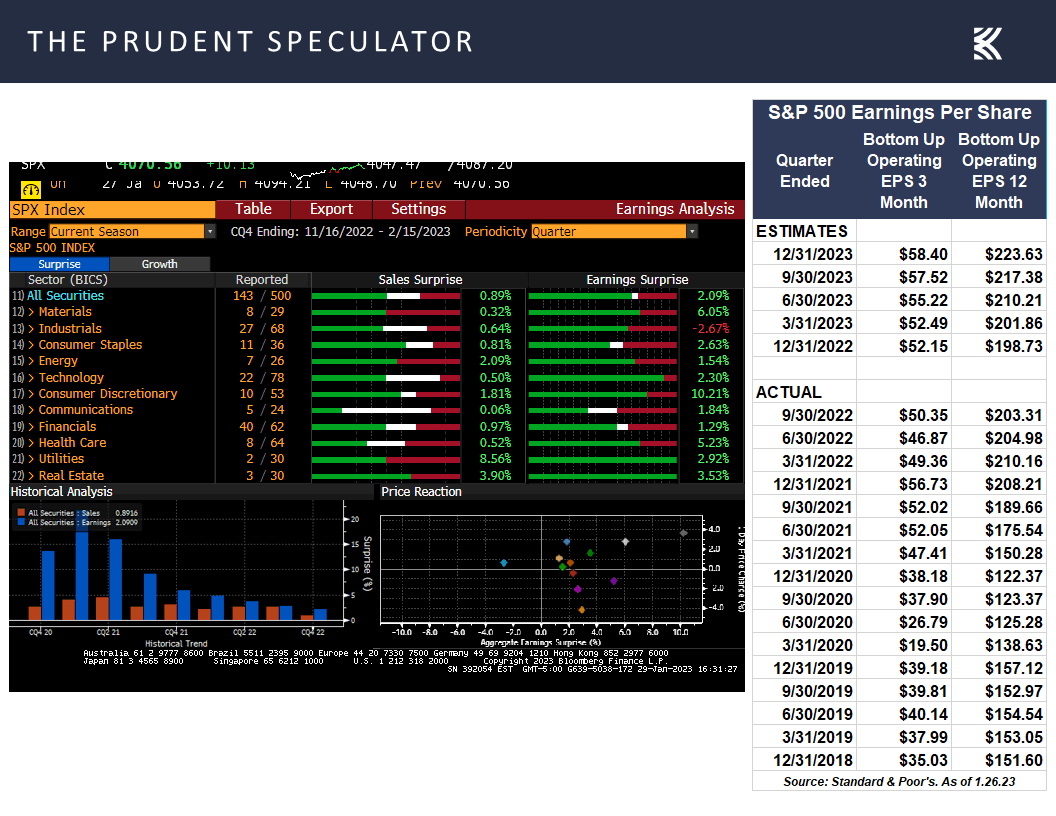
Inflation: PCE Pulls Back; Modest Increase in Market Projections for Peak Fed Funds Rate
On the inflation front, the news out last week was pretty good with the Federal Reserve’s preferred measure, the core Personal Consumption Expenditure (PCE), rising in December by 4.4%, above the 2.0% target but in line with Wall Street expectations. The figure was down from November’s 4.7% increase, and continued to alleviate concern that the Fed will further aggressively hike interest rates.
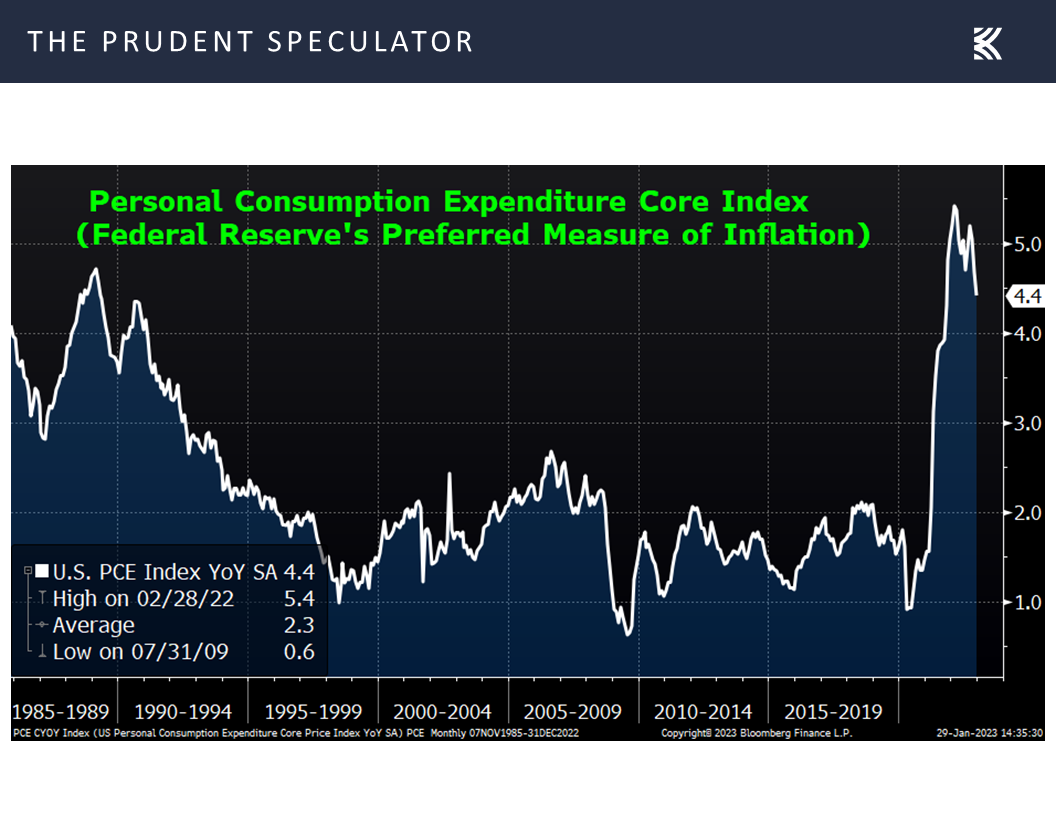
The next Fed get-together happens this week and the consensus forecast is that there will be a 25-basis-point hike in the Fed Funds rate. Although the estimate for real GDP growth in 2023 was pared to 0.5% in December, down from 1.2% in September, the Federal Reserve lifted its target for the Fed Funds rate by 50 basis points last month, following 75 basis point hikes at each of the June, July, September and November FOMC meetings. Jerome H. Powell & Co. projected last month that the Fed Funds rate will likely end 2023 at 5.1%, but the Fed Funds futures are now estimating a 4.47% year-end 2023 Fed Funds rate and a 4.91% peak in June 2023, with a pivot lower coming in July.
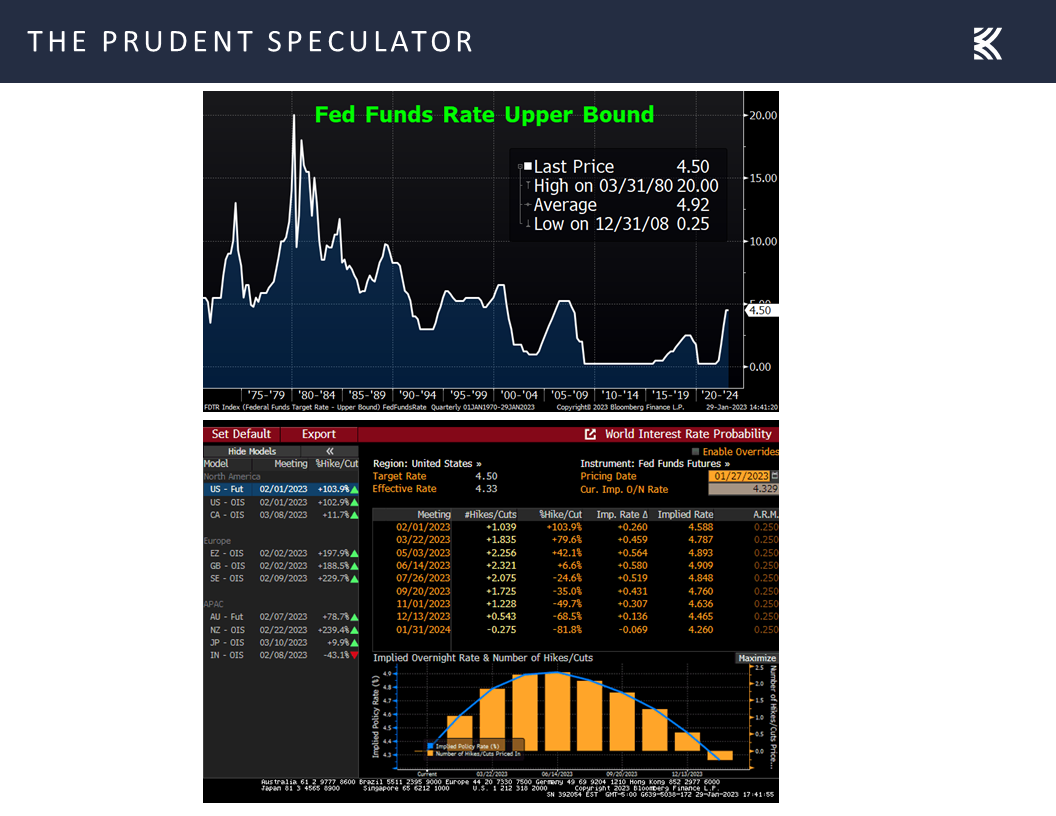
Valuations: Inexpensive Metrics for our Portfolios
The equity futures are pointing to a lower opening when trading resumes this week and it will not be surprising if stock prices are volatile before and after Wednesday’s decision on interest rates and Chair Powell’s Press Conference, but we see no reason to alter our enthusiasm for the long-term prospects of our broadly diversified portfolios of what we believe to be undervalued stocks.
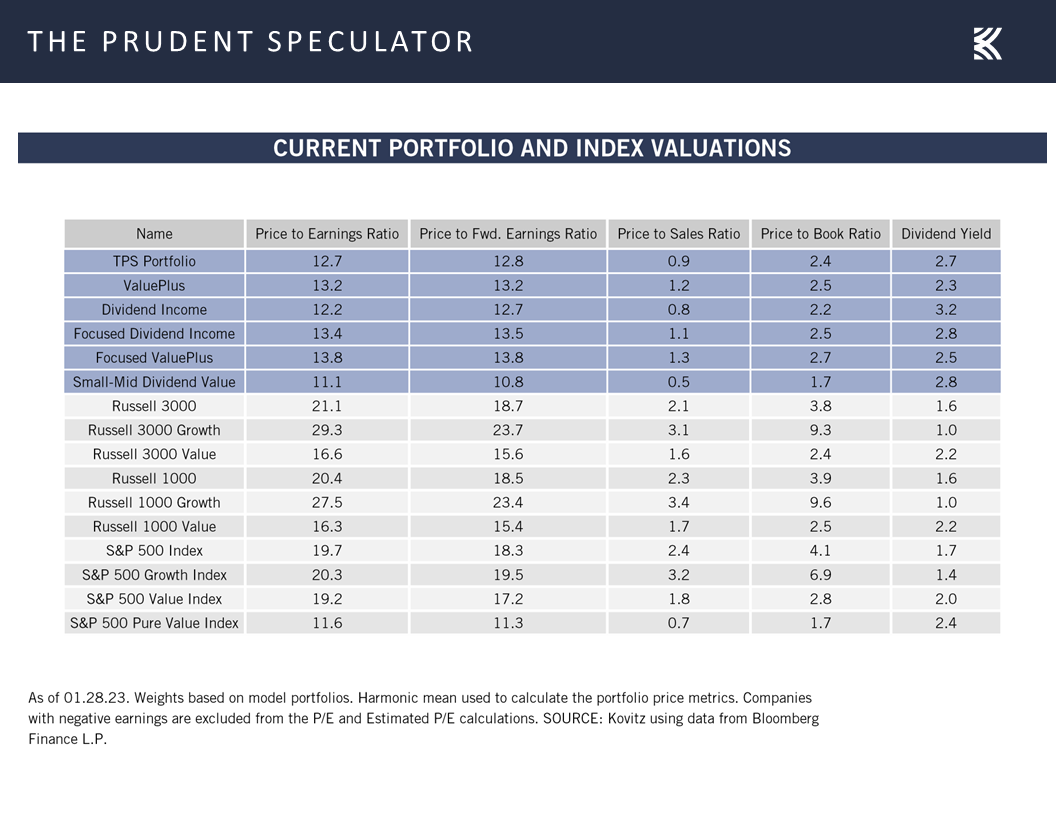
No doubt, there remains plenty about which to worry today, including the war in Ukraine, supply-chain disruptions, inventory management woes, corporate-profit question marks, elevated inflation readings, the slowing economy and increased risk of recession, not to mention comments and actions from the Federal Reserve and the debt-ceiling drama, but history is filled with plenty of frightening events, yet equities have provided handsome rewards…for those who stick with them.
